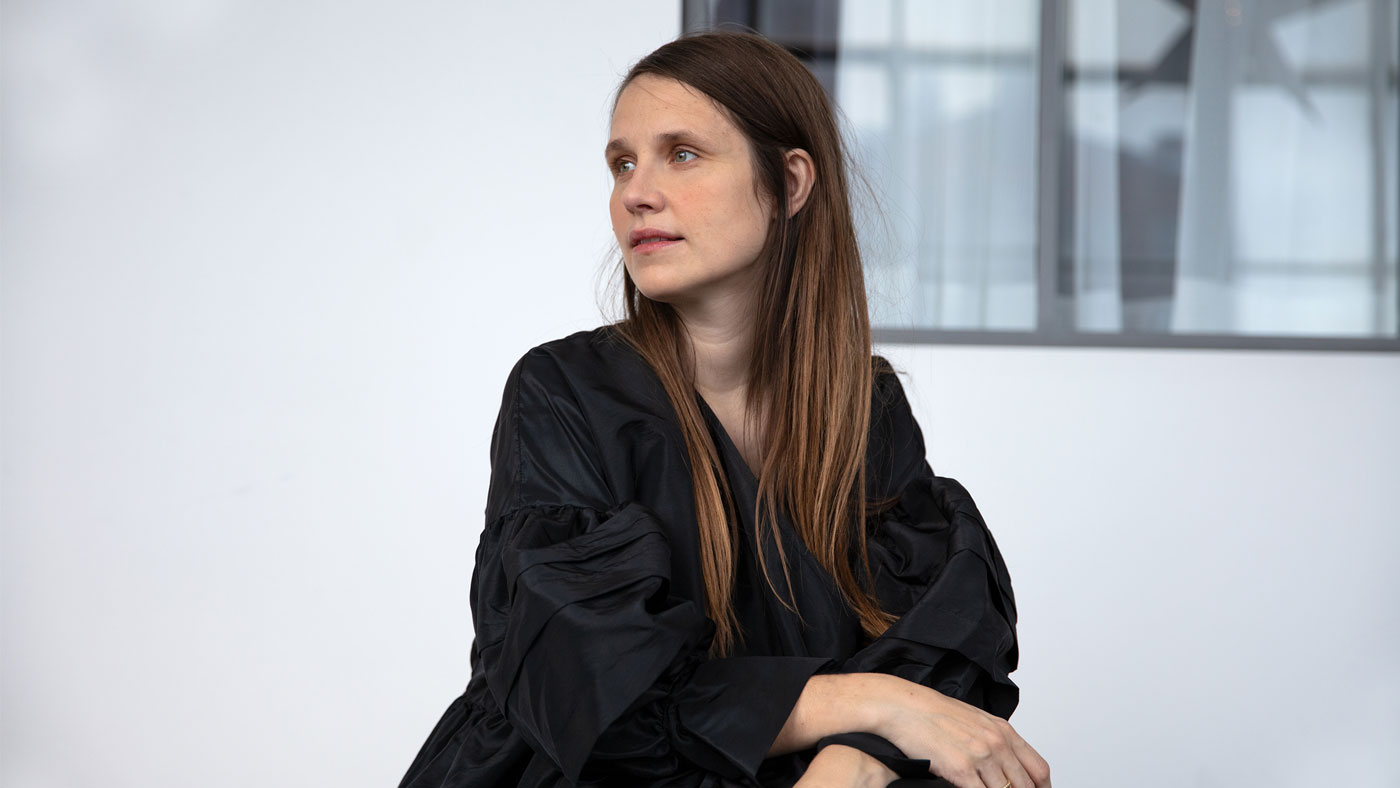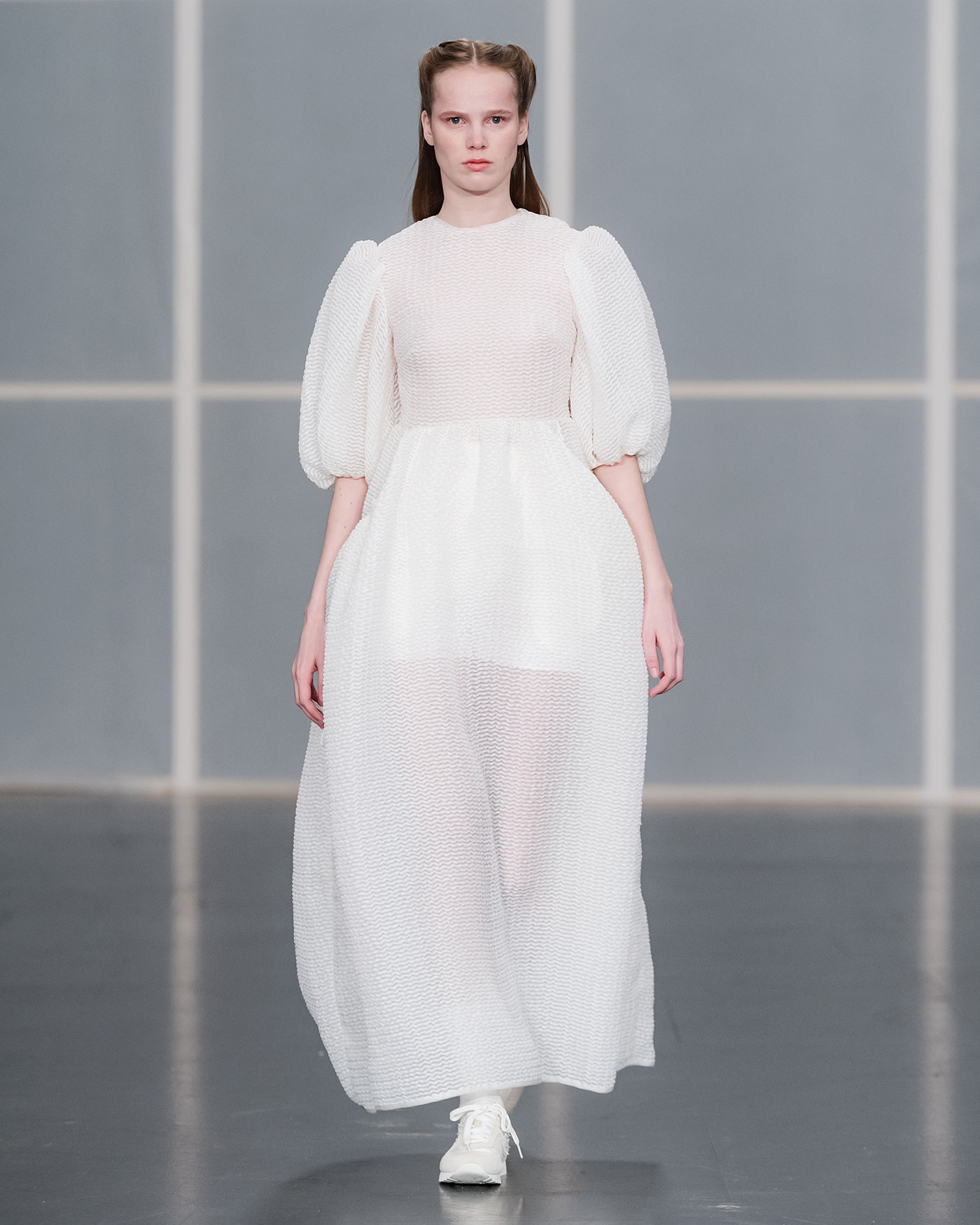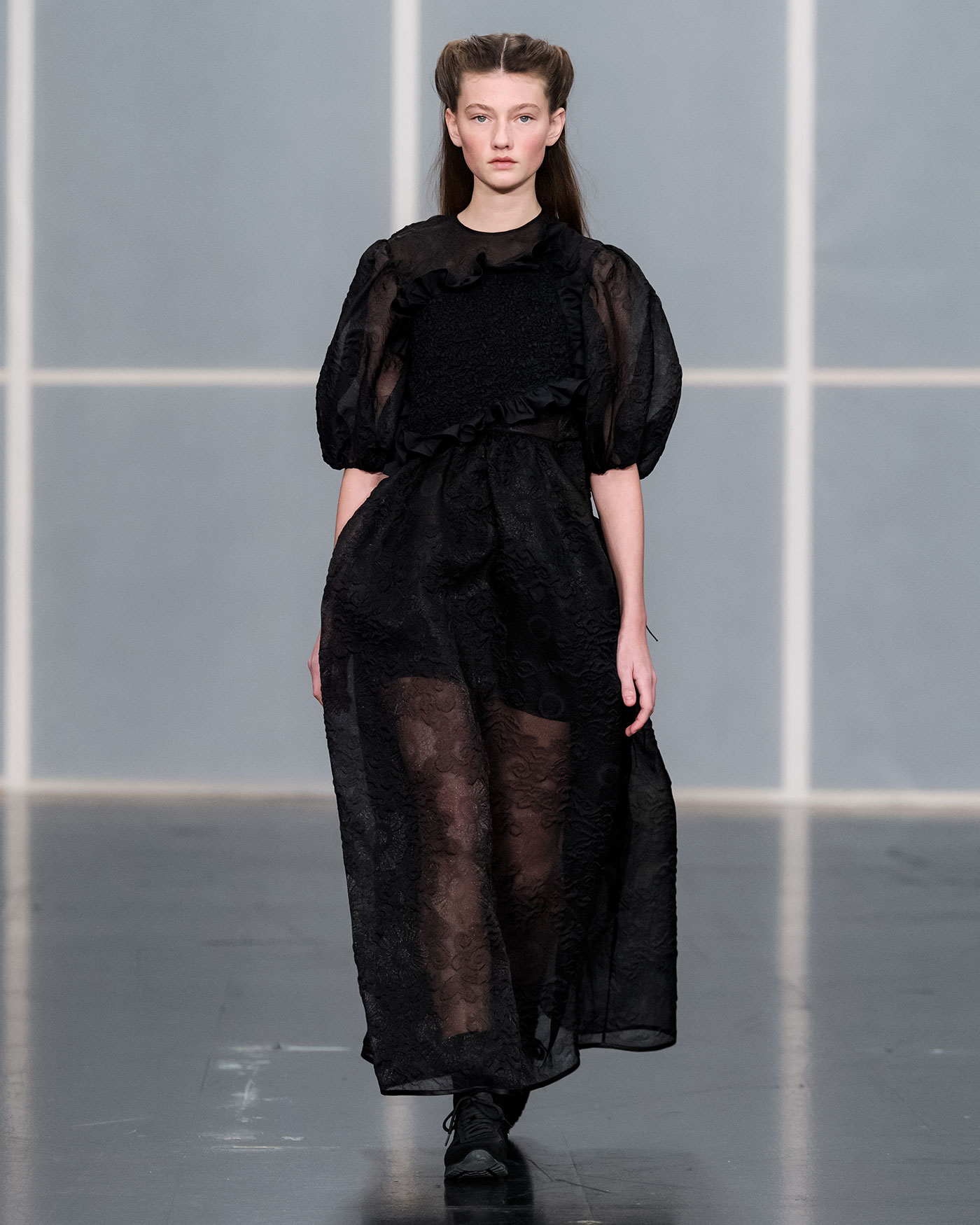Northern Light: an interview with designer Cecilie Bahnsen
The Danish designer on her very orderly approach to creating dreamy collections

Ahead of Cecilie Bahnsen’s AW20 catwalk show in Copenhagen, I’m asked if I’d like to borrow one of her pieces to wear to the event. I choose a black velvet dress from AW19, a typically voluminous tiered number with short puffed-up sleeves.
This is not a style of dress I would normally wear; for one, it looks huge on the hanger. But as soon as I put it on, I realise that though oversized, the dress is remarkably lightweight and figure-flattering. There seems to be some kind of kinetic magic underpinning its construction that makes one want to twirl around; plus it’s super conformable and has pockets, so perfect for conveying elegant mien and stylish insouciance.
“Easy chic” is one of Bahnsen’s biggest selling points, along with versatility and couture craftsmanship which make up the main tenets of her aesthetic. The 36-year-old is known for her highly wearable, billowing dresses, which are often described as “ethereal”, “poetic” and “romantic”. They’re also very sculptural, and it’s these architectural qualities that lend her designs an edge; a touch of Scandi noir to compliment her Edwardian styling.
The Week
Escape your echo chamber. Get the facts behind the news, plus analysis from multiple perspectives.

Sign up for The Week's Free Newsletters
From our morning news briefing to a weekly Good News Newsletter, get the best of The Week delivered directly to your inbox.
From our morning news briefing to a weekly Good News Newsletter, get the best of The Week delivered directly to your inbox.
Bahnsen’s success has been stratospheric. In just four-and-a-half years, her eponymous label has achieved global reach, with stockists in Asia, Russia, North America, the Middle East and Europe. In London, her designs are sold at Browns, Dover Street Market (which snapped up her very first collection) and Selfridges, as well as online at Net-a-Porter. In 2017, she was nominated for the prestigious LVMH Prize, which bolstered her reputation as an innovator in luxury craftsmanship, textiles and design.

Bahnsen, the daughter of two doctors, was raised in Gentofte, just outside Copenhagen, and attended the Royal Danish Academy of Fine Arts. “It’s always been either medicine or teaching in my family, so I’m the odd one out,” says the designer, who is expecting her first child in May. “But my grandmother used to crochet and knit, so I think I got my artistic side from her.”
After graduating, Bahnsen moved to Paris to work as a print and textile assistant for John Galliano, before studying for an MA in Fashion at the Royal College of Art in London. She gained further experience in the British capital as a senior designer at Erdem, staying three-and-a-half years before flying solo.
“I always knew that with my own brand I wanted to create this bubble of creativity that [championed] craftsmanship geared towards a love of fabrics and silhouettes,” says Bahnsen. She is sitting in her stylish Copenhagen studio, a cream basement space with baby pink cupboards, decorated with large abstract vases by her friend, glass artist Nina Nørgaard. In the back room, catwalk looks from yesterday’s show hang languidly in the same order they were presented on the runway.
A free daily email with the biggest news stories of the day – and the best features from TheWeek.com
The AW20 collection is still big on volume – dresses galore, but also jackets – only the textures are more sumptuous than ever, showing a bold embrace of daedal couture techniques and fabric manipulations in the form of patch-working, smocked macrame lace, intricate embroidery, hand-quilting, knitted silk and mottled-effect crinkling.
The natural world is an obvious influence, with her dresses and jackets often described as “clouds” because of their cocooning effect. But her bespoke fabrics have their own organic qualities, too. Waves and creases across delicate organza look like ripples in the sand, while packed swirls and crevices of her macramee lace recall fossilised coral.
“You have to adjust each dress to the fabric, then you work against it and change the nature of fabric,” is her rather cryptic explanation of how she achieves these results. Bahnsen’s show itself, arguably the most popular at Copenhagen Fashion Week, was presented in a large barren warehouse, with just a blown-up image of a stark northern Russian landscape as a backdrop. The photograph, shot by Martina Hoogland Ivanow, was Bahnsen’s starting point for the collection, which explains her earthy tones and undulant shapes.
“I wanted to capture that cold Nordic component and a sense of otherworldliness – the crisp morning light, as well as the magical glimmers you get in the twilight,” says the softly spoken designer. “When you look at Martina’s image, you are calm, but also a tiny bit on edge.”

So, does she have a favourite piece from the show? Bahnsen doesn’t want to choose, but she does have a touching story to share. A few days earlier, she asked one of her young show models a similar question. “She said her favourite dress of mine was at home. She told me she had saved up and then queued for 15 hours to buy it in the sale, because she wanted to wear it to a party. She was so sincere and sweet! When you’re tired and stressed before a show... well, it’s very special,” Bahnsen says, welling up a little.
Bahnsen’s designs are mostly monochromatic. The SS20 palette is black, white, daffodil yellow and blush pink. There’s a ritual she follows when she starts a collection, too: “I always begin with the whites, because it reveals all the details; there’s a purity and innocence from which to develop more silhouettes and textures. I design in [colour] sections, but I spend a lot of time working out how to connect them. I’m drawn to more masculine silhouettes in black than in white.”
Bahnsen’s gossamer dresses for SS20 are gentle and playful, though there’s a soupcon of dark mischief at play, a hard-to-place gritty attitude that simmers in the seams. Think the petticoat looks in Peter Weir’s film Picnic at Hanging Rock or the feminine frocks in Sofia Coppola’s The Virgin Suicides.
The designer also introduced suiting for the first time this season, with diaphanous trousers and jackets marking a significant shrink in volume from her voluminous dresses with “poufy” (her word) sleeves, proving that she’s certainly not stuck in her ways.
Clearly a shapeshifting imagination is all part of that creative bubble of hers, so expect many more surprises from this Danish dream weaver.
-
 Political cartoons for January 4
Political cartoons for January 4Cartoons Sunday's political cartoons include a resolution to learn a new language, and new names in Hades and on battleships
-
 The ultimate films of 2025 by genre
The ultimate films of 2025 by genreThe Week Recommends From comedies to thrillers, documentaries to animations, 2025 featured some unforgettable film moments
-
 Political cartoons for January 3
Political cartoons for January 3Cartoons Saturday's political cartoons include citizen journalists, self-reflective AI, and Donald Trump's transparency